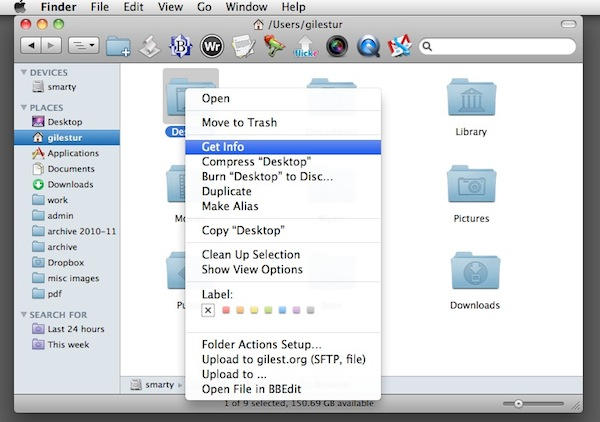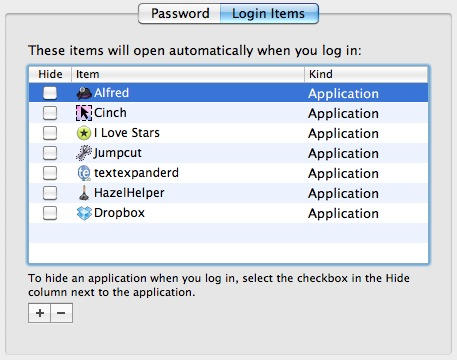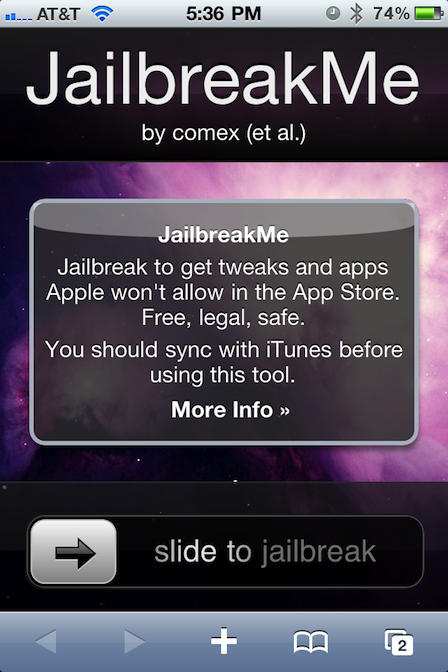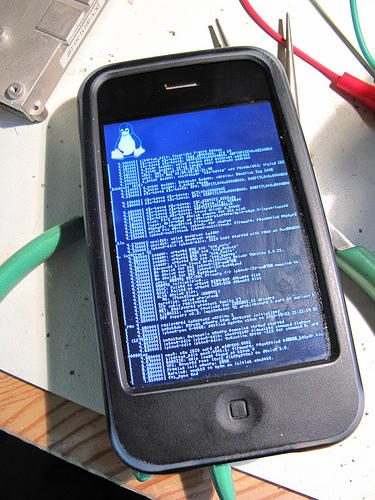Not quite sure what you’re looking at? These seven Escher-esque airplane propellors were captured by iPhone photographer Soren Ragsdale, and while the resulting image is a bit mind-bending, no genius would find anything wrong with his iPhone’s camera sensor. Instead, the photo is just a trippy (but terribly neat) demonstration of the iPhone’s rolling shutter.
Here’s how it works. Unlike a film camera — which quickly opens its shutter and burns the resulting image into the ensconced film strip all at once — most digital cameras have a rolling shutter. An iPhone doesn’t take the picture all at once; instead, it works more like a scanner, starting from one side and — line by line — moving to the far end of the photograph.
Usually, this all happens so fast that you can’t tell the difference, but when you start adding in photographic subjects that spin faster than your iPhone’s camera can scan them, you get the weird reality bending of the image above.
The iPhone’s not alone in exhibiting this behavior: you’ll see this sort of sampling on pretty much every CMOS sensor camera on the market. A nightmare for professionals, surely, but for a consumer interested in Dali-fying his iPhone photos without downloading an app, it’s a pretty cool side effect.
[via Gizmodo]


![Get Spotify’s iPhone App Working In USA [How To] post-56412-image-6c098111e26b5f07da1aa392fd812fcf-jpg](https://www.cultofmac.com/wp-content/uploads/2010/08/post-56412-image-6c098111e26b5f07da1aa392fd812fcf.jpg)



![Many Options Available for Mac Remote Control [MacRx] Mac-Through-Binoculars](https://www.cultofmac.com/wp-content/uploads/2010/08/Mac-Through-Binoculars2.jpg)
![Disable Facebook Places in 3 Easy Steps [How To] facbookicon](https://www.cultofmac.com/wp-content/uploads/2010/08/facbookicon.jpg)


![Install Flash On Your Jailbroken iPhone 4 In Just 3 Easy Steps [How-Tos] 500x_screen_shot_2010-08-09_at_9.52.35_am](https://www.cultofmac.com/wp-content/uploads/2010/08/500x_screen_shot_2010-08-09_at_9.52.35_am.jpg)

![How To Reset Your Mac Password [MacRx] out-window](https://www.cultofmac.com/wp-content/uploads/2010/08/out-window.jpg)
![Fix iPhone 4’s Jailbreak Security Hole [How To] View_PDF](https://www.cultofmac.com/wp-content/uploads/2010/08/View_PDF.jpg)


![Add Twitter, Facebook to all Your iPhone Apps with qTweeter [Jailbreak Superguide] post-33508-image-dbb1058b23cc3344b08b13fe090a8799-jpg](https://www.cultofmac.com/wp-content/uploads/2010/07/post-33508-image-dbb1058b23cc3344b08b13fe090a8799.jpg)
![Use An External Bluetooth Keyboard With Your iPhone [Jailbreak Superguide] post-32378-image-28711e2242b0a14404e2b99da2cca9d3-jpg](https://www.cultofmac.com/wp-content/uploads/2010/07/post-32378-image-28711e2242b0a14404e2b99da2cca9d3.jpg)
![Record Your iPhone Screen with ScreenRecorder [Jailbreak Superguide] post-33585-image-06cba1b7a3a23d6f010fc252c6985b53-jpg](https://www.cultofmac.com/wp-content/uploads/2010/07/post-33585-image-06cba1b7a3a23d6f010fc252c6985b53.jpg)
![Create A Complex Lockscreen Passcode for Your iPhone [Jailbreak Superguide] post-32870-image-cddc216851c0c6921e77b3f173972b65-jpg](https://www.cultofmac.com/wp-content/uploads/2010/07/post-32870-image-cddc216851c0c6921e77b3f173972b65.jpg)
![Downgrade iPhone with SHSHs Stored on Cydia [Jailbreak Superguide] SHSH-OSX-0](https://www.cultofmac.com/wp-content/uploads/2010/02/SHSH-OSX-0.jpg)
![Run Third-Party iPhone Apps In Background with Backgrounder [Jailbreak Superguide] post-32508-image-f0a1ab13cb88719d818fe11b04d2aaf9-jpg](https://www.cultofmac.com/wp-content/uploads/2010/07/post-32508-image-f0a1ab13cb88719d818fe11b04d2aaf9.jpg)
![Access Your iPhone File System with SSH [Jailbreak Superguide] post-32134-image-a39dd063ae8d3584ec8e4eb1c9e46fba-jpg](https://www.cultofmac.com/wp-content/uploads/2010/07/post-32134-image-a39dd063ae8d3584ec8e4eb1c9e46fba.jpg)
![Before Jailbreaking, Extract Your iPhone’s SHSH Blobs with Umbrella [Jailbreak Superguide] post-41561-image-d9ca868b2d9594fa85574bec3d7640ba-jpg](https://www.cultofmac.com/wp-content/uploads/2010/07/post-41561-image-d9ca868b2d9594fa85574bec3d7640ba.jpg)
![Add Multiple Exchange Accounts to Your iPhone [Jailbreak Superguide] post-32762-image-6c1e1fa10df722afff05d7e39b6ef2e5-jpg](https://www.cultofmac.com/wp-content/uploads/2010/07/post-32762-image-6c1e1fa10df722afff05d7e39b6ef2e5.jpg)
![Enhance Copy/Paste Features On Your iPhone [Jailbreak Superguide] post-37613-image-6c0844decf92d655bed461f06b7b1ee0-jpg](https://www.cultofmac.com/wp-content/uploads/2010/07/post-37613-image-6c0844decf92d655bed461f06b7b1ee0.jpg)